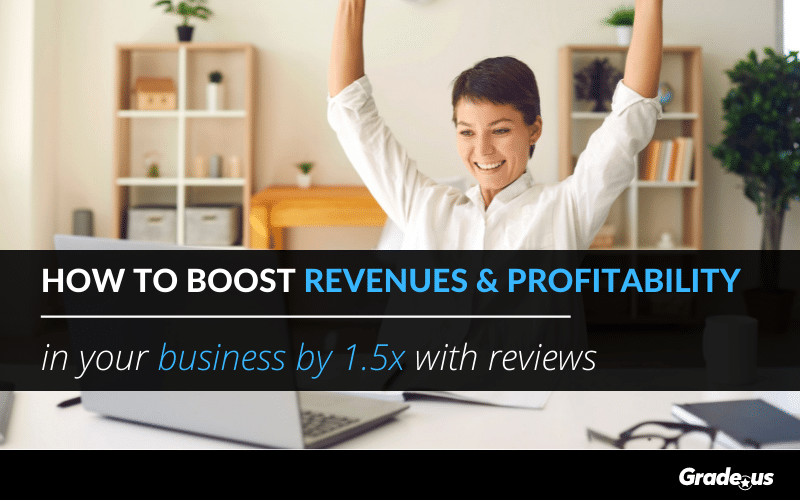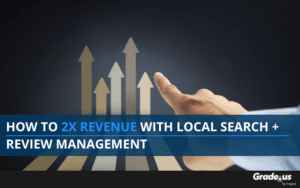Everybody loves them.
Your closest competitor takes the lion’s share of leads in your area. Customers seek them out, using other local businesses like yours as leverage to get a better deal.
More people choose your competitor.
But why?
Your products and services are comparable; pricing is similar too. Customers are happy to pay your competitors more for less.
What’s their secret?
They use customer reviews as a homing beacon, focusing their attention on the specific areas that add value to the customer relationship.
Local businesses are ignoring their reviews
Small business teams spend most of their time putting out fires. There’s always more work to be done and never enough people to do it. It’s a constant, ongoing battle to stay afloat — fighting to meet payroll, deal with regulations, and overcome steady competition.
That’s why they neglect their reviews.
Oh, they know reviews are important. One or two negative reviews in Google or TripAdvisor, and suddenly their leads dry up as their marketing costs explode.
Most bite the bullet.
They find a way to spend what they need to dig themselves out of the hole.
It works.
But it’s also sad to see because a free solution is staring them right in the face. I’m talking about a solution that can increase profitability by at least 1.5 percent.
Skeptical? Let’s look at the data.
Researchers at Womply found that 75 percent of businesses do not respond to their customer’s reviews. This is super easy to verify.
Pick a company with at least 50 reviews.
Next, look at their reviews (positive and negative). How many reviewers have received a reply from the company in question?
See what I mean?
Here’s why these responses are so important.
- Companies that respond to reviews 25 percent of the time average 35 percent more revenue
- Companies that don’t reply to any reviews earn 9 percent less revenue on average
- Customers spend 49 percent more money with businesses that respond to reviews
- A 30 percent reply rate is the minimum you need to surpass your competitors
- When brands increased their response rates to 32 percent, their local search conversion rate was 80 percent higher than average
So you just need to respond to reviews then?
Well sure.
But this is only half the story.
The majority of businesses don’t bother to respond to customer reviews. Those who do only respond to negative reviews; a vanishingly small number respond to positive and negative reviews, which is a serious problem.
Here’s why.
A large portion of positive reviews includes negative feedback.
Like this:
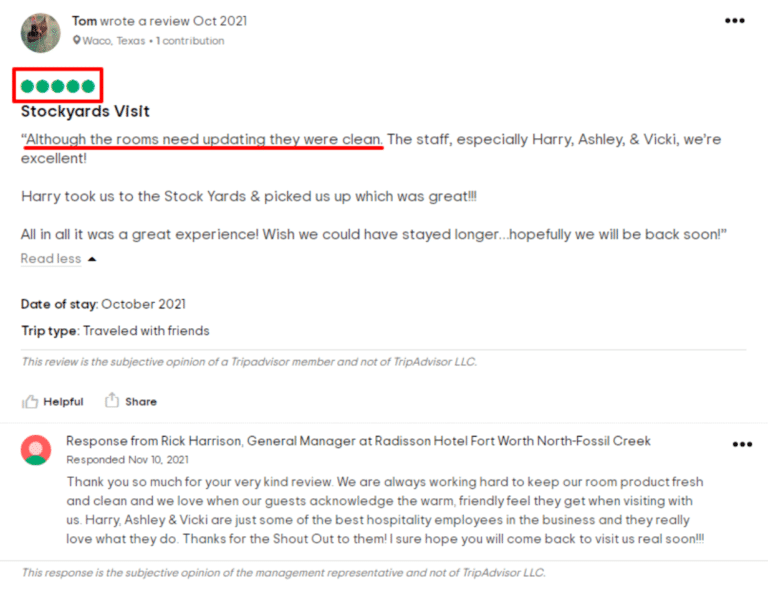
Tom gave the Radisson a five-star review.
But his review begins with criticism; “Although the rooms need updating, they were clean.” He then shares a glowing review — he even mentions key employees by name.
What did Rick (the manager) do?
He responded to Tom, thanking him for his review and inviting him back for a visit in the future. This is outstanding though he ignored Tom’s feedback about the room.
But wait, there’s more!
Research from the Harvard Business Review found that replying to customer reviews results in better ratings. Better ratings mean better rankings and increased visibility in Google.
Here’s why that matters.
Research from Moz found businesses risk losing as many as:
- 21.9% of customers if you have just one negative review listed on page one of Google
- 44.1% of customers if you have two negative results
- 59.2%of customers with 3 negative results
- 69.9% of customers with 4 negative results
This is why responding to reviews is so important.
You can’t respond to online reviews if you don’t know they exist
You need intel to do your job well.
Here’s the thing, though.
Knowing your reviews exist isn’t enough anymore. If you’d like to squeeze more revenue out of your reviews (positive or negative), you’ll need consistent data across four specific dimensions.
- Review volume: What’s your total volume of reviews across all review sites, especially when compared to your competitors? If you have 50 reviews, but your closest competitor has 1,500, that’s a big problem. They’ll receive the lion’s share of visibility, traffic, leads, and revenue — from search engines and review sites. Don’t believe me? Calculate this for yourself.
- Aggregate ratings: This is the overall rating for your review portfolio across all review sites, as well as your aggregate ratings on specific sites like Google, TripAdvisor, Yelp, etc. You’ll need to see how your business stacks up against the competition.
- Review recency: Customers believe reviews that are older than 3 months are irrelevant and less valuable. What does this mean? You aren’t allowed to coast when it comes to reviews, even if you’re in the lead. Customers want a fresh supply of reviews.
- Review sentiment: Are customers more or less inclined to work with your business? Is the buzz (as a whole) about your business positive or negative. This is important for various reasons, but it’s especially important when it comes to things like attracting investors, taking out a loan, etc. If sentiment in the marketplace is trending down, this will have a broad (and negative) impact on your business.
Here’s why these dimensions matter.
- You’ll be able to suss out insider information from customers; they’ll air your competitor’s dirty laundry, which you can use to grow your business.
- Google uses reviews as a ranking factor in local search; the stronger your review portfolio, the greater your visibility in search.
- Customers will see that you actually care about them and earning their business. Good help can be hard to find, but customers will hold on to you if you’re the best at what you do.
- You can decrease feast and famine cycles. If you tie data like sentiment to ad costs, you’ll be able to gain precise details on the drivers that are increasing advertising and marketing costs.
- If your review volume grows consistently, customers see that you’re in demand and worth their time. You’re not resting on your laurels, and you’re definitely not relying on past success.
- Your negative reviews will feel like a gut punch; if you accept the lesson, that gut-punch will produce an avalanche of revenue.
This is common sense, right?
Only it’s not.
The vast majority of businesses aren’t doing this. They may be unaware, unwilling, or unable to gather and act on this data, but it’s there.
Are you using it?
If I knew how or had the time, I would use it, Andrew.
Here’s the thing.
You already know how to use this information; I shared the answer with you. Remember the title of this post? “How to boost revenues and profitability in your local business by 1.5x with reviews.”
Let’s take a closer look at how we do this.
How to boost revenues and profitability with reviews
It’s really quite simple.
You analyze your reviews using the four dimensions I’ve listed above (e.g., review volume, recency, sentiment, and aggregate ratings). You’re looking for trends that indicate something is wrong.
Sort of like this:
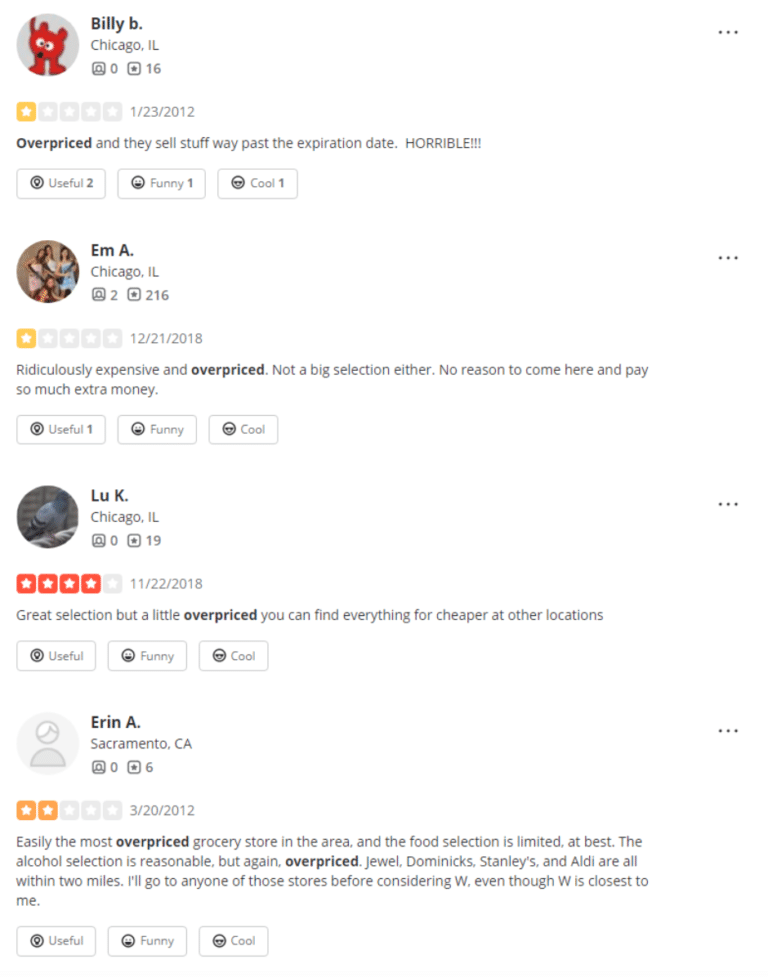
Maybe it’s just these four people?
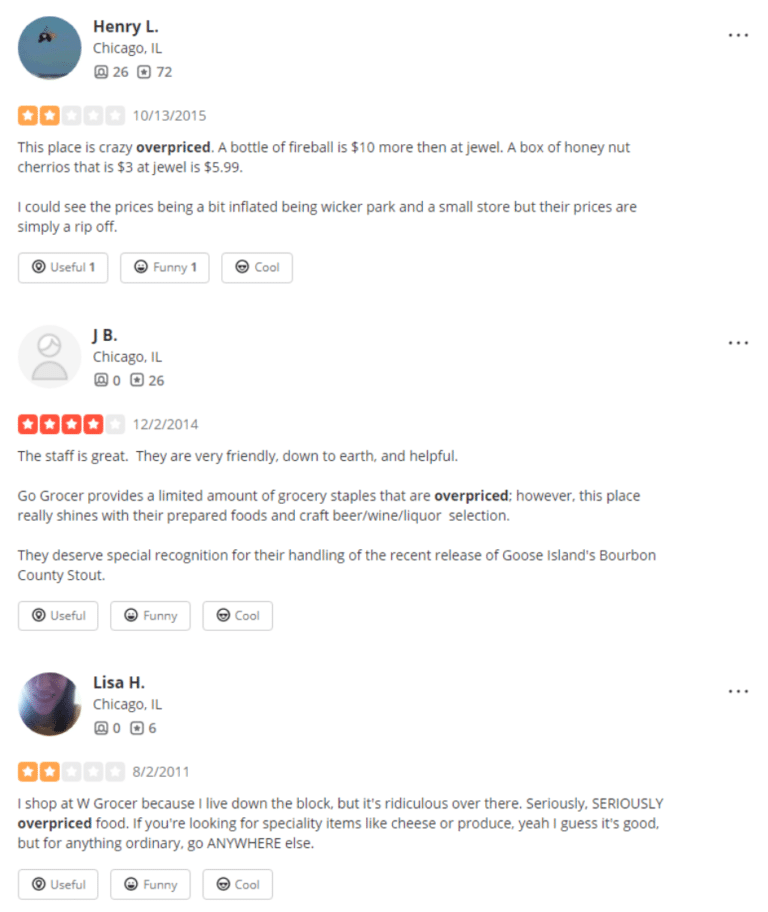
Nope, this is a thing.
Customer after customer mentions how overpriced their products are. When customers say, “for anything ordinary, go ANYWHERE else,” this has an obvious impact on conversions.
Meaning what exactly? In this example they’re:
- Focused on the wrong target audience
- A triggering event has had a negative impact on their customers
- Customers can’t justify spending more money on staple foods
- Their business attracts a disproportionate number of detractors who don’t love your business
They’ll have to do some digging.
If you find the answer to the problem and you implement the right solution (via testing), your reviews, visibility, traffic, growth, and, more importantly, your conversions will improve.
Yeah, but this may not improve profitability.
This is true.
So we’ll need to be more specific if we want to boost revenues and profitability in your local business by 1.5x.
Using this data to boost revenue and profitability
It starts with sorting.
You can use behavioral or outcome markers to identify customer cohorts.
- Behavioral markers include a strong provider/customer relationship, customer admiration, or lots of consistent engagement across your organization.
- Outcome markers vary but typically include details like revenue per customer, product consumption rates, repeat sales (per customer), purchase frequency, profit margins, monthly, quarterly, or annual spending.
If you’ve already fixed the problems outlined by customers in your reviews, this is the next place to look.
You’re looking for trends again.
You’ll want to identify the behavioral and outcome markers that lead to increased profits, and you want to do it in a way that’s granular and measurable; this is essential.
You’re looking for the unicorns.
If we’re using the Pareto distribution, 20% of your products or services will produce 80% of your revenue and profits.
Reviews show you.
Analyze your financials; search for these unicorns that produce the most revenue for your business. Then cross-reference your unicorns with your review data.
You’re looking for:
- Data explaining why customers like this particular product or service
- Objections or reasons outlining what they were worried about before they bought from you
- Details that made customers more comfortable with their decision to choose you
- The obvious and hidden problems your product or service solves
- Reasons outlining why they didn’t select a competitor
- The fear, desire, or goal that drove them to your business
But it all starts with the “who.”
You’ll need to know your target audience and who you’re targeting first before you go searching for unicorns. Have you done this already?
Good.
Next, you’ll need to calculate your breakeven cost for your products and services and your business overall. You can use this formula to do just that.

You can learn more about that here.
Once you have this information, you can increase your price so it’s in line with the market and your current or future positioning.
What does that mean?
Your product is tangible, but it needs to match the intangible elements in the marketplace. If you’re selling a high-quality product that’s priced too low, many customers will become hesitant or suspicious (e.g., this sounds too good to be true, what’s the catch?).
What if the market perceives your product as cheap?
There’s a limit or cap to the amount customers are willing to pay due to the low-quality perception attached to your business. This is something large brands like Amazon do every 10 minutes.
Growth requires consistency and harmony.
This isn’t decided by you or your business; it’s determined by your customers and the marketplace. Your mission, should you choose to accept it, is to sell your product or service at the best possible price that the market can support.
You don't have the time to do this review leg work yourself
You’re busy putting out fires, doing the hard work required to grow your business. When will you have the time to do this kind of leg work? I mean, sure, it’ll increase your revenue and profits, but many other things may suffer in the meantime.
Many businesses believe you have to keep running on the treadmill if you’re going to survive.
If you stop, everything comes apart.
That’s a tough way to run your local business, and it’s an extremely difficult way to try and grow your operation. Here’s our answer to this seemingly complex problem.
It’s software.
With the right software, you’ll have access to all this data; and, with API access and tools like Zapier, you can combine this with your other sources of data to identify the key growth areas that are incredibly profitable.
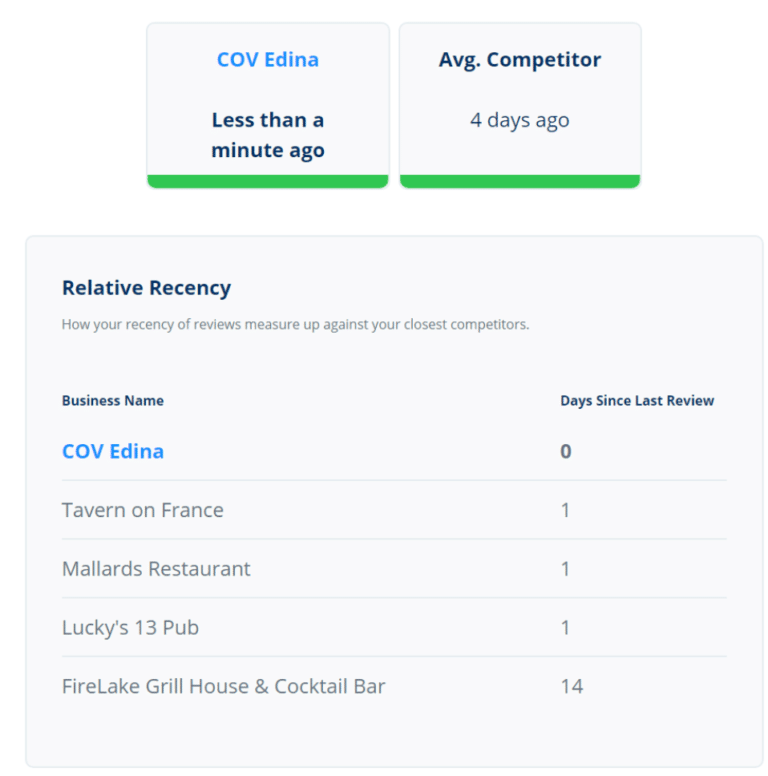
See what I mean?
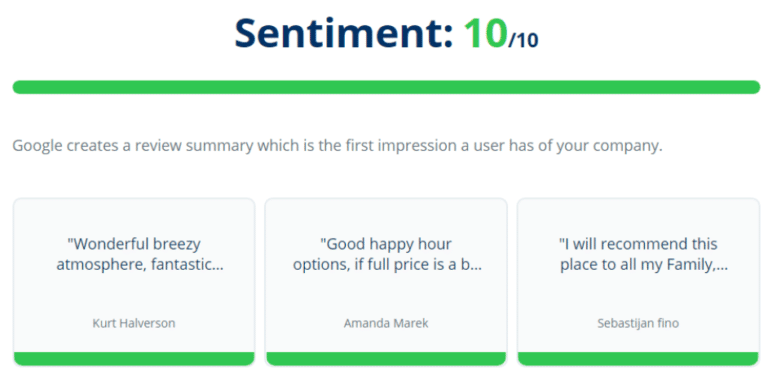
Try it for Free: Sign up for a Grade.us 14-day Trial and begin using the NEW Prospect Report to boost your revenues!
This is how you boost revenues and profits with reviews
Everybody loves you.
Your closest competitor struggles to keep up with you. They can’t seem to figure out why your business takes the lion’s share of leads and sales in your region.
More people choose to work with you.
They don’t know your secret; They can’t see that you’re using customer reviews as a homing beacon, focusing your attention on the specific areas that add value to your customer relationship.
They treat their reviews as a one-off.
Your competitors may respond, but most won’t. They’ll ignore their customer reviews, responding only when they have the time.
You won’t.
With a clear plan of attack, you’ll turn your online reviews into a revenue generator and profit powerhouse.

